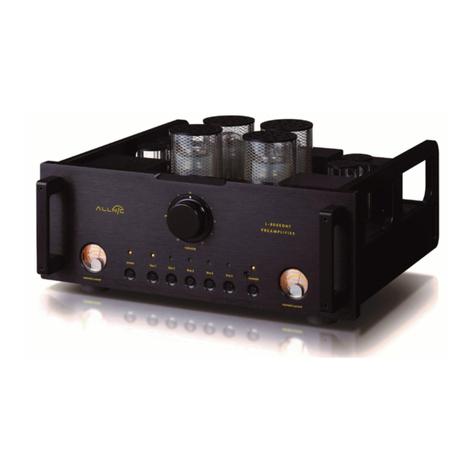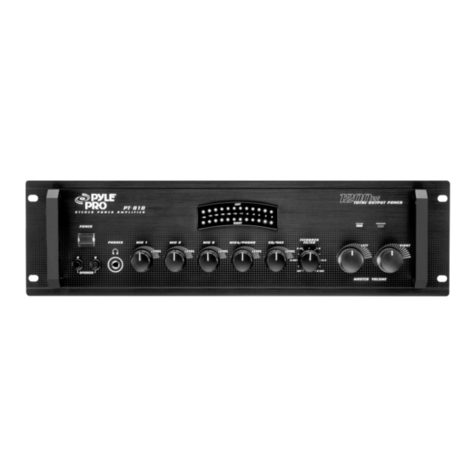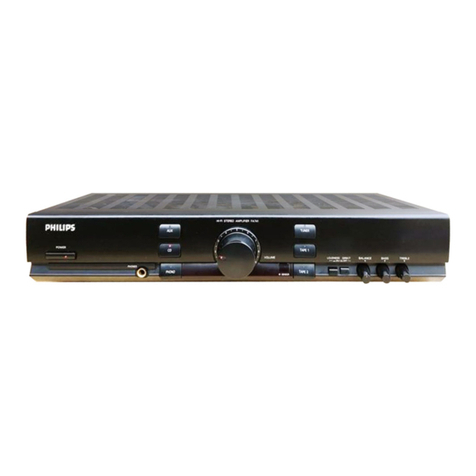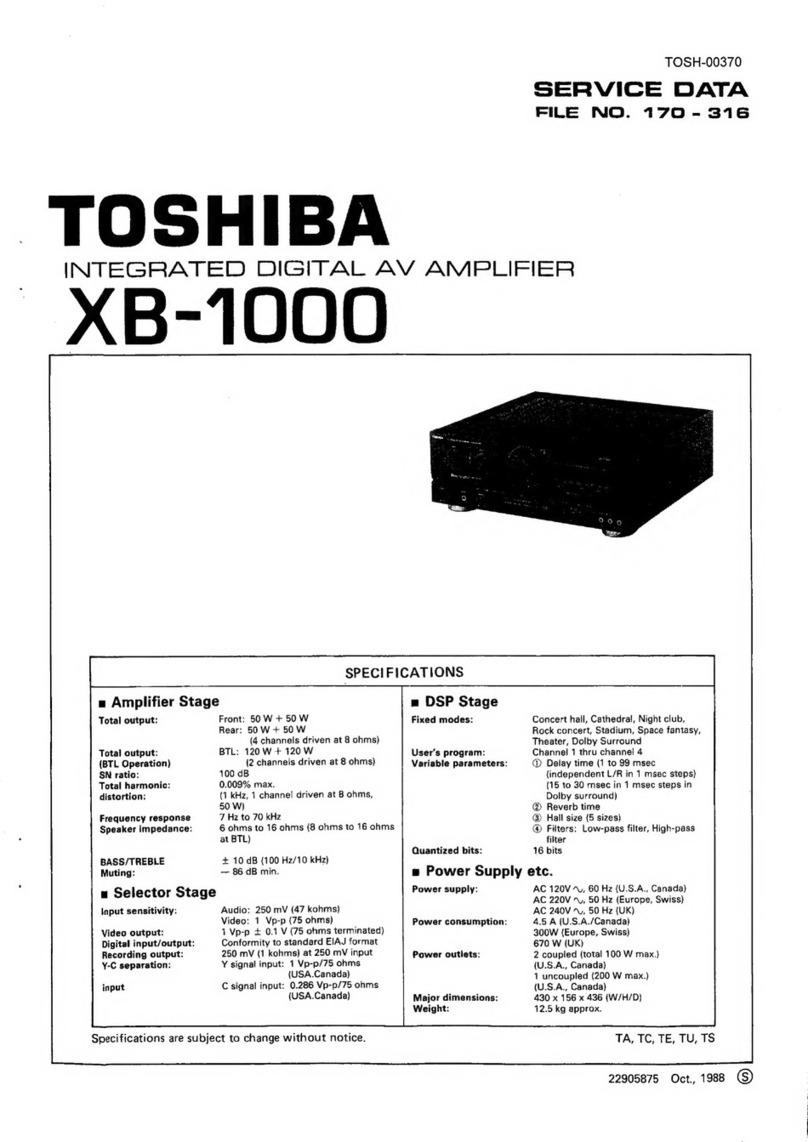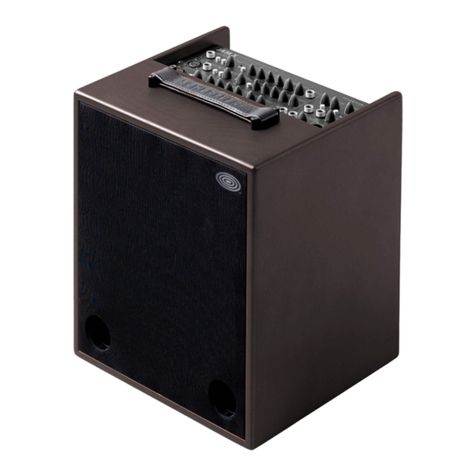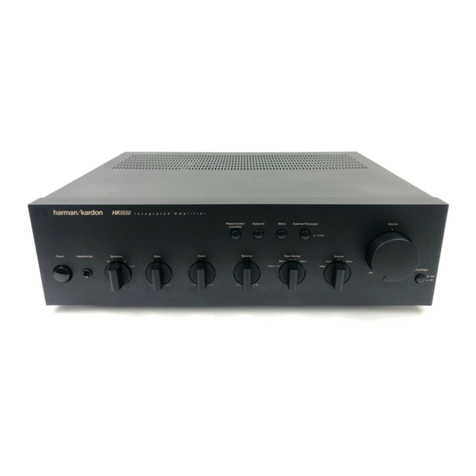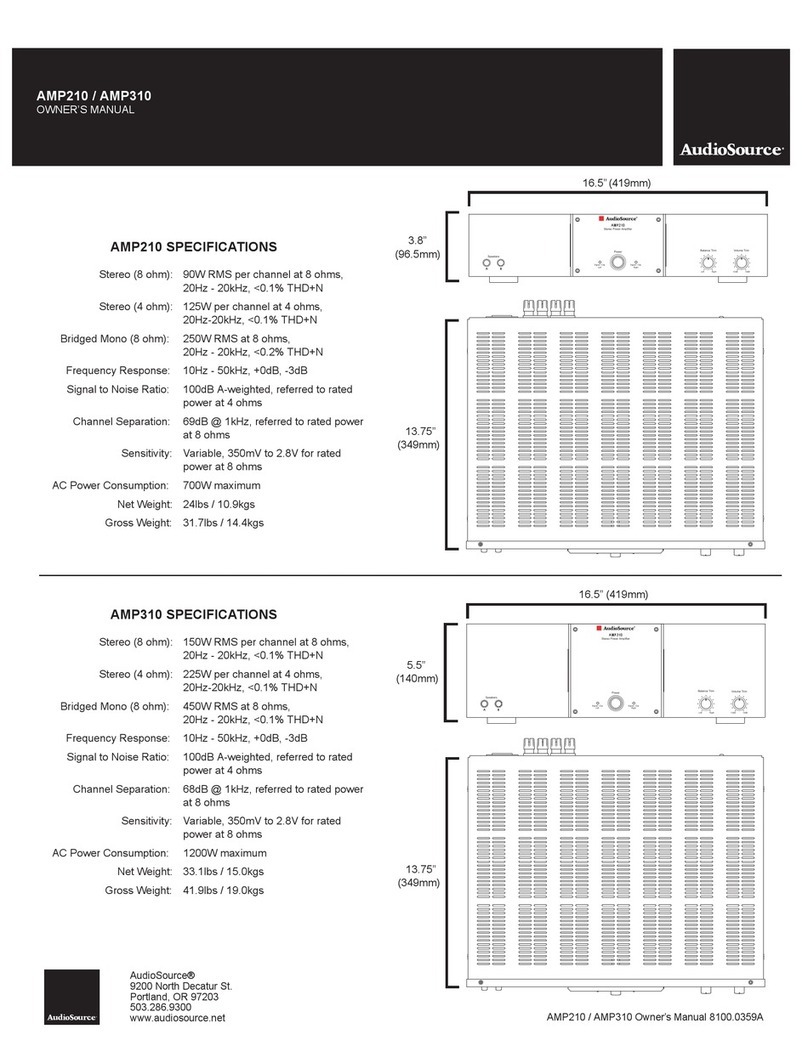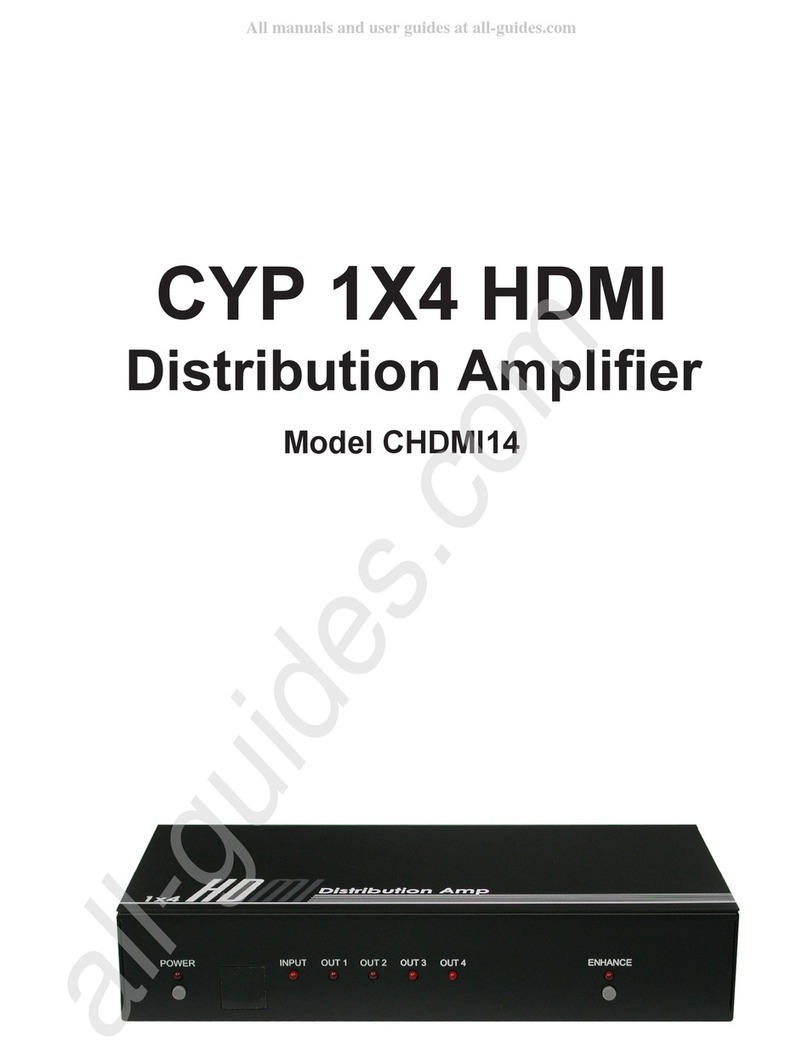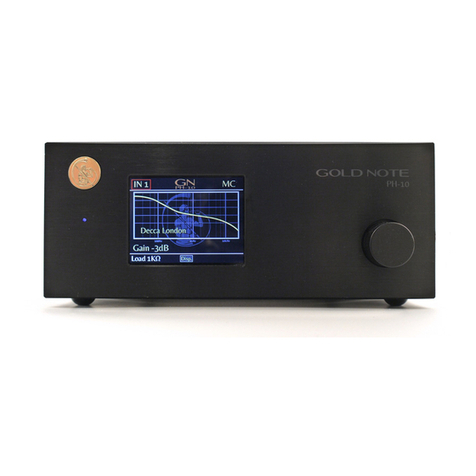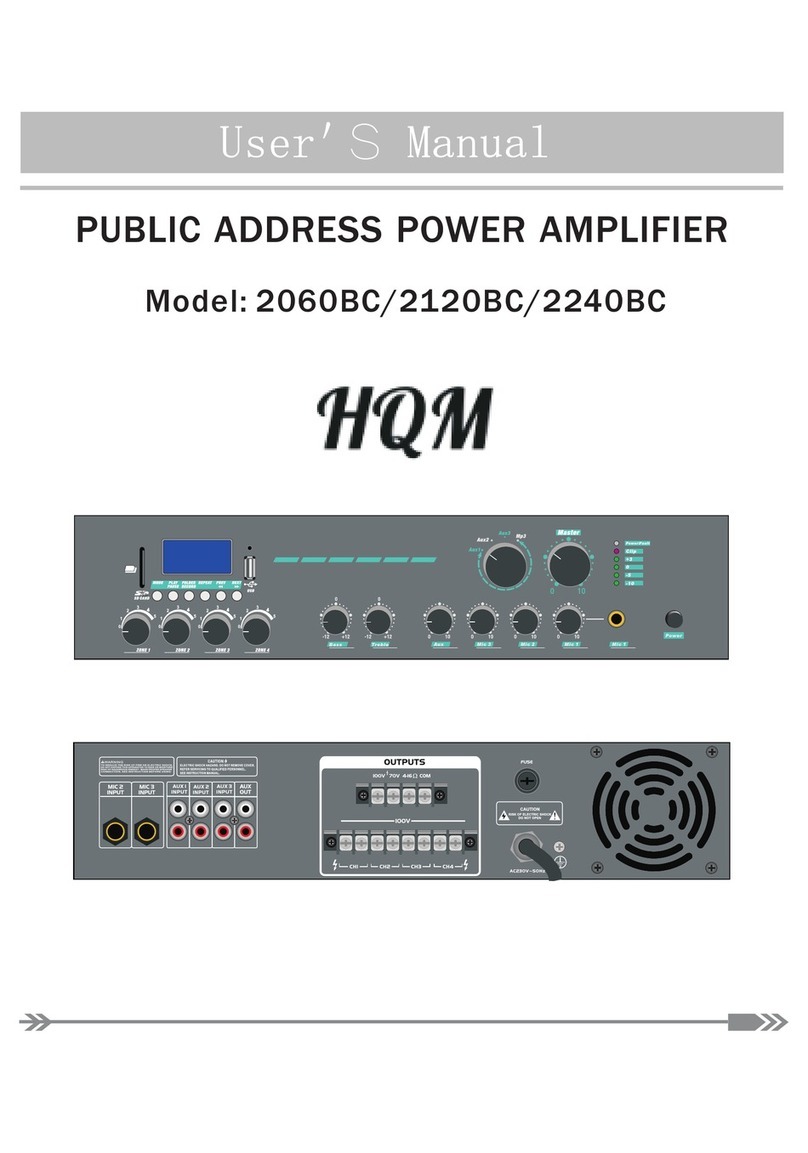Genuin Audio Pearl User manual

Operating instructions Technical description
pearl
Phono preamplifier with external power supply
Scope of delivery
1 x Phono preamplifier pearl
1 x Power supply for phono preamplifier pearl
1 x Connecting cable phono preamplifier pearl > power supply
1 x Mains cable for power supply
Putting into operation
Please first establish the connections between pearl and turntable and amplifier
respectively as well as the connection to the external power supply and the local power
grid* - see the following chapter "Connecting". Only then switch on the power supply and
the phono preamplifier. Please do not remove any connection cables during ongoing
operation - but switch off the phono preamplifier as well as the power supply beforehand.
When connecting the device for the first time as well as after switching on the external
power supply, the output of the phono preamplifier is blocked for approx. 30 seconds.
During this time, internal servo circuits adjust themselves so that there is no DC voltage at
the output. After accomplishing that, the phono preamplifier switches on immediately.
Since the device has a long warm-up phase until it reaches its full sonic potential, it should
be operated with the power supply permanently switched on. The power consumption is
less than 11 watts. All internal amplification sections work in Class A mode.
* Note: Before connecting this unit to the mains power using the power supply cable, you must ensure that the
unit's mains voltage setting matches the local mains voltage. If you are unsure and have any questions about the
local power supply, please contact your local electricity supplier. The device operates with 230 V.

Connecting
The pearl can be connected to any unbalanced RCA line input or balanced XLR input of a standard stereo
preamplifier or integrated amplifier.
Please refer to the schematic illustration on the bottom of the device for the assignment of the rear inputs
and outputs.
Cables with a length of up to 4 meters can be connected to the output sockets of the pearl, since
significant interaction between cable capacitance and output resistance are negligible due to the low
output resistance of less than 50 Ohms. Nevertheless, the cable capacitance should be less than 150 pF/m.
The same applies to the balanced outputs. These feature an output resistance of 2x < 50 Ohms and allow
common mode rejections of more than 80 dB with a correctly designed balanced input amplifier section.
The output level is 6 dB higher than with the unbalanced output.
The clipping limits for MM and MC referred to 1 kHz are >= 20 dB above reference level, measured at 40
dB gain for MM and 60 dB gain for MC. The reference level is 0.5 mV for MC and 5 mV for MM.
2

Cartridge operation
The pearl phono preamplifier basically allows the use of Moving Magnet (MM), Moving Iron (MI) and
Moving Coil (MC) cartridge systems, the latter also in the "high output" variant.
The pearl phono preamplifier provides simultaneous operation of two cartridges. One cartridge must
always be an MC system, while the other can be an MM or MI system.
Both cartridges can be connected simultaneously and remain connected. The corresponding adjustments
made with the switches on the bottom plate of the phono preamplifier only affect the selected input.
The phono preamplifier pearl always operates in balanced amplification mode when using MC systems,
and in unbalanced amplification mode when using MM systems.*
Switching is done via the MM/MC button on the front panel.
CAUTION !
Do not press the MM/MC switch during operation as long as the volume
control of the subsequent component is not set to zero (= no signal at the
output of the connected preamplifier stage)!
The resulting impulse-like, vociferous crackles might destroy connected
loudspeakers or power amplifiers!
After switching from MM to MC or MC to MM please always wait for approx.
30 seconds, as during this time span the internal servo amplifiers regulate the
DC output voltage down to 0 volts. Only then open the volume control again.
Grounding
With correct balanced operation (of a MC cartridge) an additional ground wire between turntable and
phono preamplifier is not required, whereas for MM systems this is indispensable - use the centrally
placed ground terminal GND on the back plate of the pearl.
* Note: It is generally not recommended to use an adapter at the balanced input to connect unbalanced cabling. Even though the device will work, it
will perform only far below its maximum achievable sonic potential. At the same tim e ,
the effect of suppressing interferences by means of the
balanced input is no longer provided.
3

Overload indication
Two red LEDs on the front panel signal a massive overload of the device -
accompanied by a very high output level.
Possible causes: the unintentional connection of an MM cartridge to the MC input,
incorrect wiring or the erroneous connection to the output of a high-output level
device.
In normal phono operation, these LEDs will only light up in exceptional cases - i.e. when a cartridge with
about 20 dB more output level than usual is used. The threshold is reached at 9V peak and even then the
distortion limit of 0.1% THD & Noise is not yet reached.
Subsonic filter
The Subsonic switch located next to the MM/MC button activates the subsonic filter
with a slope of 18 dB/octave and a cutoff frequency of 16 Hz.
The function is signaled by a yellow LED.
4

Settings
Extensive adjustments can be made via the slide switches located on the bottom plate of the pearl. By
changing the input resistance, gain and capacitance (MM only) per channel individually, it is possible to
perfectly adapt the pearl to the cartridge systems used and the listener's personal preferences.
You can adjust all switches during operation - with one important exception: the MM/MC switch on the
front panel! (see page 3).
On/Off function
Basically, the following applies: When the switches are not actuated, the idle position is always down (= at
the digit). The active position is up (= ON).
MC cartridges
MC input impedance
With the slide switches R you can set the input impedance of the MC input stage from 2000 Ohms down to
125 Ohms.
When the switches are not operated, the input impedance is 2000 Ohms.
Switch 1 activated 1000 Ohms
Switches 1 + 2 activated 500 Ohms
Switches 1 + 2 + 3 activated 250 Ohms
Switches 1 + 2 + 3 + 4 activated 125 Ohms
MC gain
The Gain slide switches change the gain of the MC stage. The overall gain of the pearl phono preamplifier
is always the sum of both MC and MM gains.
When the switches are not operated, the MC gain is 20 dB.
Switch 1 sets gain to 22 dB
Switches 1 + 2 set gain to 24 dB
Switches 1 + 2 + 3 set gain to 26 dB
Switches 1 + 2 + 3 + 4 set gain to 28 dB
If a high input impedance and a low gain are selected, MC high-output cartridges may also be operated in
the MC position.
5

MM"cartridges
MM capacitance
The slide switches C enable the capacitive adjustment of MM cartridges by means of adding capacitances.
When using the tonearm genuin audio point, for example, the inherent capacitance from the tonearm
outset (cartridge connectors) to the Lemo plug is approx. 50 pF. This value adds up to the input
capacitance of the subsequent MM amplifier.
Attention: When operating MC cartridges, the position of these switches is without effect.
The fixed input capacitance of the phono preamplifier pearl is 47 pF.
The DIP switches increase the capacitance stepwise by +47 pF at a time.
Switch 1 increases by +47 pF
Switch 2 increases by further +47 pF
Switch 3 increases by further +47 pF
Switch 4 increases by further +47 pF
Thus, the maximum load capacitance when using the above mentioned exemplary tonearm genuin audio
point is 285 pF (= 5 x 47 pF pearl + 50 pF inherent capacitance tonearm).
MM gain
The Gain slide switches allow gain adjustment of the MM amplifier section.
When the switches are not operated, the MM gain is 37 dB.
Switch 1 sets gain to 40 dB
Switches 1 + 2 set gain to 42 dB
Switches 1 + 2 + 3 set gain to 44 dB
Switches 1 + 2 + 3 + 4 set gain to 46 dB
By selecting the appropriate gain factors of MC or MM, a suitable gain setting for each existing
electrodynamic cartridge system should be found.
The maximum overall gain is thus 74 dB (MC switches 1 - 4 + MM switches 1 - 4). Typical values for MC are
60 dB and for MM 40 dB. Upon request all input values can also be provided with individual impedance or
capacitance values.
6

In case of mismatch and possibly resulting overload, the two LEDs "Overload" on the front panel flash red.
The overload limits for MM and MC referred to 1 kHz are + 20 dB above nominal level. The nominal levels
for MC and MM are 0.5 mV and 5 mV respectively.
Specifications
Input impedance MM……………………………………………………………….……........…47 kOhms
Input impedance MC………………………………………..variable from 125 Ohms to 2 kOhms
Input capacity MM………………………………………………....... variable from 47 pF to 285 pF
Input capacity MC………………………………………………….............………………………2 x 470 pF
Input impedance unbalanced………………………………..........…………………………….47 Ohms
Input impedance balanced………………………………….........…………………………2 x 47 Ohms
Frequency response deviation 10Hz to 100 kHz…………………………………………+/- 0,3 dB
Frequency response deviation channel-to-channel……………………………...……+/- 0,3 dB
Level difference channel-to-channel ………………………………………...........………+/- 0,3 dB
(maximum values, typical values are < 0,1 dB for all adjustable gain and resistance values)
Subsonic filter with 18 dB/Octave in Bessel characteristic…………….….15,9 Hz (at -3 dB)
Equivalent signal-to-noise ratio referred to reference level
Signal-to-noise ratio MM unvalued………………………………………………………………..> 80 dB
Signal-to-noise ratio MM valued ……………………………………………………………….…..> 90 dB
Signal-to-noise ratio MC unvalued ……………………………………………………….………..> 60 dB
Signal-to-noise ratio MC valued ……………………………………………………...……………..> 65 dB
(Valuation carried out with an A filter, unvalued measuring uses a Brickwall filter from
22,4 Hz to 22,4 kHz as per Bruel&Kjaer standard, MM gain = 40 dB and MC gain = 60 dB)
THD & Noise ……………………………………………………………………………............………….< 0,01 %
Intermodulation……………………………………………………………………..........………………< 0,01 %
Common mode rejection MC……………………………………………........………………………> 90 dB
Maximum output voltage unbalanced…………………………..........……………….> 9 V effective
Maximum output voltage balanced………………………………………..........……> 18 V effective
Mains power supply:
Filtered toroidal transformer with DC suppression and 250 Watts rated output
Voltage stabilization with additional suppression of power frequency components
down to approx. 25 µV
Sieving capacity of power supply > 40 000 µF, added by 80 000 µF inside the phono preamplifier
For further technical information please visit our website www.genuin-audio.de
7

General information
Safety instructions
Do not operate the device in places where it is exposed to extreme heat or moisture. This will prevent
the risk of electric shock or fire.
Check the local mains voltage before operation.
Never remove the cover.
Service
There are no parts inside the device that can be repaired by the user. Always leave the service to
trained personnel. A warranty becomes invalid if the product has been serviced by non-authorized
personnel. In case of service, please contact genuin audio or your authorized dealer.
Important notes
The information contained in this document is subject to change without prior notice and does not
represent a commitment on the part of genuin audio.
genuin audio assumes no liability for any errors in this manual. No part of this manual may be
reproduced, transmitted in any form or by any means, electronically, mechanically, by photocopying
or recording, without the prior written permission of genuin audio.
© genuin audio
Version 1.1
September 2019
Contact
genuin audio
Byhlener Strasse 1 - 03044 Cottbus - Germany
Phone: +49 (0) 355 38377808 - Fax: +49 (0) 355 38377809
Email: info@genuin-audio.de
8
Table of contents
Other Genuin Audio Amplifier manuals



